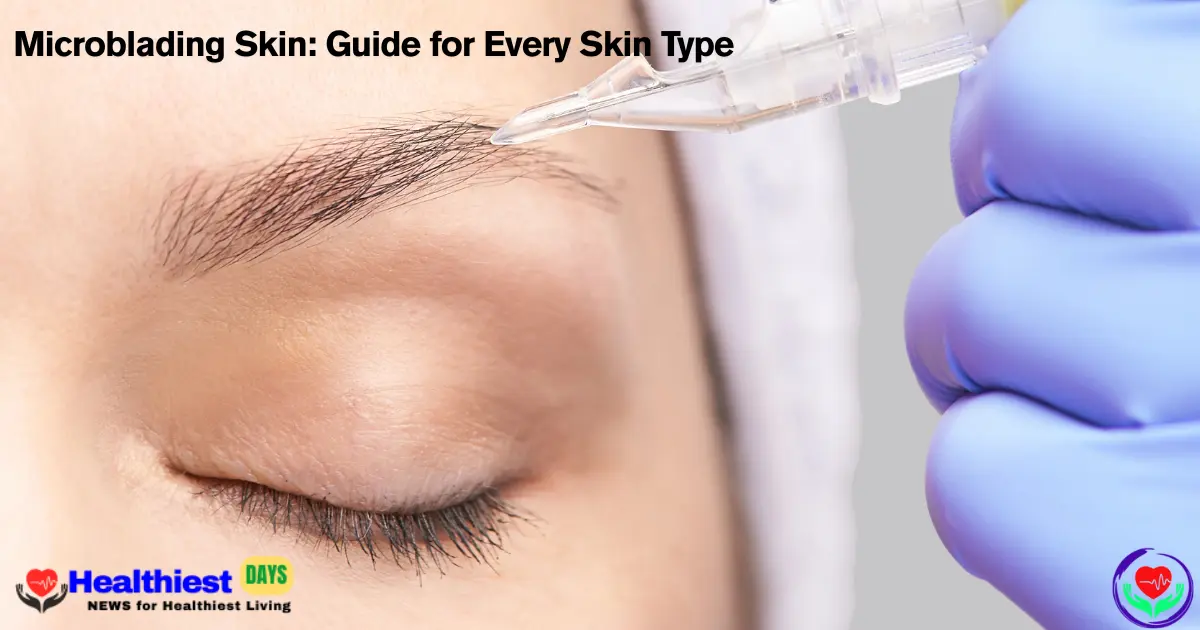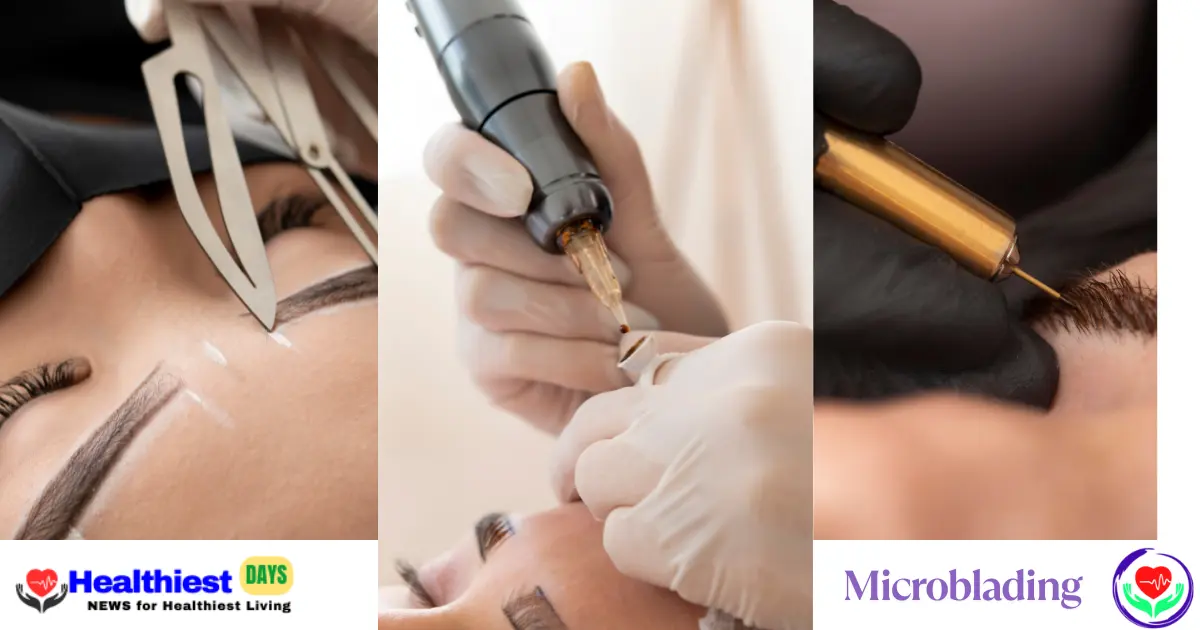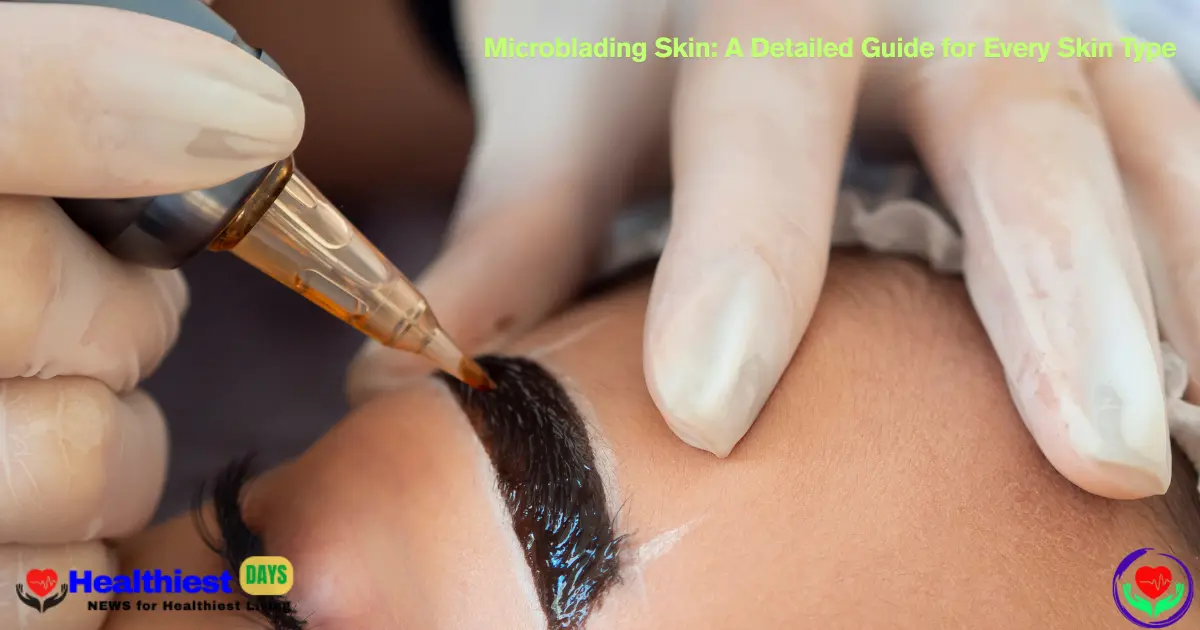Microblading Skin: A Detailed Guide for Every Skin Type (Oily, Dry & Sensitive)

Introduction: Why It Matters More Than You Think
Microblading skin sounds like a niche concern, but it’s the foundation of a successful brow transformation without any fear anymore. If you are dealing with a situation where your microbladed brows didn’t last long, healed poorly, or faded unevenly. There are some certain chances that ensure that your skin type wasn’t properly accounted for.
If you are feeling frustrated because your microbladed brows didn’t last, healed oddly, or looked uneven, then no need to worry, as you’re not alone. One of the major reasons for it happening is that your skin type wasn’t properly included during the aftercare procedure. Oily skin, for example, more importantly tends to push pigment out faster, while dry skin has the capacity to flake or scab too soon. Sensitive or acne-prone skin types are considered to react differently to certain products or procedures. That is the real reason why a one-size-fits-all approach won’t work when it comes to skin care.
Taking care of your skin after microblading becomes a very crucial step because it is not just about applying ointment or avoiding makeup for a few days. It is about the way of knowing what your skin needs to heal naturally and properly. It also gives the right support to your skin cells. It also conveys the message of how your skin reacts. Choosing products that won’t interfere with healing becomes the most appropriate decision. To follow a daily routine that becomes an urgent need by protecting your new brows.
Let’s dive into the science-backed knowledge and skin behind every beautiful brow.
Understanding the Connection Between Skin and Microblading
What Is Microblading, and Why Does Skin Type Matter?
Microblading is a semi-permanent tattooing technique or a simple physical procedure that implants pigment into the skin using smaller strokes to mimic natural brow hair. Explaining the procedure of the technique, your skin is the canvas, and if it is not suitable for prepping, then even the best artist cannot guarantee long-term results to you at any cost.
Why Each Skin Type Responds Differently
It must be kept in mind that microblading skin response isn’t one-size-fits-all. The way in which your skin heals, absorbs pigment, and retains color depends heavily on the following factors:
- Oil production levels of your skin
- Skin thickness within different skin-layers distribution
- Sensitivity of your skin
- Natural hydration capacity of the skin
- Inflammation response against any reaction
Microblading for Oily Skin
If you have proper oily skin, then you have probably noticed that your brows fade faster than you would like in reality. The reason behind this is that excess sebum pushes pigment out during the important process of healing. You may have chances to experience more blurring or smudging of the strokes.

Tips that need to be considered for oily skin:
- It should be avoid heavy moisturizers post-treatment
- There is a need to choose a powder or hybrid brow over classic microblading
- It must be blot gently with oil-absorbing sheets
- You must use astringent (if approved by your artist) to control shine
Microblading for Dry Skin
Dry skin has a higher chance to retain pigment well, but it can also crack or flake during the healing procedure. It can lead to creating patchy areas if not cared for properly.
Signs your skin is dry:
- Flaking or rough texture becomes a clear sign.
- Tightness after cleansing can be some other important factors
- Little to no oil by midday may also be considered
Best practices:
- It is recommended to opt for light, fragrance-free moisturizer
- There is no need to pick at flaking skin—this removes pigment
- It is said to keep wet healing to keep skin hydrated during recovery
- It should be avoided—strong acids or exfoliants for at least 2 weeks
Microblading for Sensitive or Acne-Prone Skin
Sensitive skin is said to be very reactive because it is often red, itchy, or inflamed. If you’re acne-prone or sensitive, then you’re more susceptible to infection or clogged follicles post-microblading.
What to do:
- There is a need choose a certified artist who specializes in sensitive skin
- You must avoid chemical sunscreens, retinol, and acne treatments for 1 week prior
- You should follow dry healing microblading protocols to reduce irritation
- You are advised to use sterile saline wipes if itching occurs
Microblading for Combination Skin
A combination of different kinds of skin (oily in some areas, dry in others) presents a tricky challenge. You’ll need a customized approach in the given way:
- You are encouraged to use oil control on the T-zone
- Try to use moisturizer on the drier areas like temples and outer brows
- Your artist certainly can recommend a hybrid pigment method
Skin Prep Before Microblading
1 Week Before
- You are strictly avoided to use alcohol and caffeine (they thin the blood)
- You must stop using retinoids and acids
- No need to wax, thread, or tan brows
24 Hours Before
- Stay hydrated for maximum times
- Try to skip makeup and skincare around the brow area
- Must avoid aspirin or ibuprofen

Healing: How Your Skin Type Affects Recovery
Microblading healing stages differ slightly based on your skin. Here’s a quick overview:
| Skin Type | Healing Approach | Common Issue | Solution |
| Oily Skin | Dry healing preferred | Pigment blurring | Oil-control routine |
| Dry Skin | Wet healing ideal | Flaking or cracking | Hydration + gentle balm |
| Sensitive Skin | Gentle dry healing | Redness, inflammation | Minimal product use |
Long-Term Care After Microblading Skin
Once your brows heal, you’ll need to adjust your skincare in the following ways:
- Must avoid exfoliants directly on brows
- Recommended to use SPF daily to protect pigment
- You must get touch-ups as recommended (usually 12–18 months)
- You must be Gently cleanse with fragrance-free products
Best Products for Microblading Skin Aftercare
The items mentioned below are approved by U.S. dermatologists that work well after the procedure:
Aquaphor (which is great for dry healing)
Cetaphil Gentle Cleanser can also be used
EltaMD SPF 46 (sensitive skin safe)
CeraVe Moisturizing Cream is another good choice
You must avoid heavy occlusive or strong active ingredients for 7–10 days.
What If You Have Problematic Skin?
If you have clear symptoms of eczema or psoriasis, you must consult both your dermatologist and brow artist. Some skin conditions may affect the following:
- Color retention
- Risk of flare-ups
- Delayed healing
In certain cases, you may also need an alternative method like powder brows or micro-level brows instead of traditional microblading.
FAQs About Microblading Skin Types
1. Can microblading be done on any skin type?
Yes, it can be done on any skin type, but oily and sensitive skin types may require proper technique adjustments.
2. Is microblading good for acne-prone skin?
It can be good, but it demands some extra care must be taken. It is suggested to avoid active breakouts in the brow area and follow strict aftercare prevention techniques.
3. How do I know if my skin is too oily for microblading?
If your skin becomes shiny within an hour of washing, or if you had fading tattoos in the past, it is a clear symptom that you likely have very oily skin. See our full [Oily Skin Microblading Guide].
4. What happens if I use anti-aging serums after microblading?
Anti-aging ingredients have the capacity to fade the pigment faster. You should wait at least 2 weeks post-microblading before reintroducing them properly.
5. How long does microblading last on different skin types?
- Oily: It may last for 8–12 months
- Dry: It can last for 12–18 months
- Normal: It lasts for 12–24 months
- Sensitive: It lasts for 10–14 months (depending on aftercare)
Final Thoughts: Know Your Skin, Love Your Brows
Your microblading skin type isn’t something to ignore, yet it’s the key to getting natural-looking brows that last and heal well.



